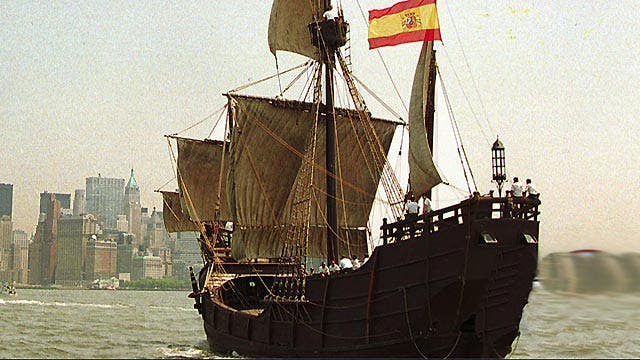An explorer who believes he's found the wreckage of Christopher Columbus' flagship, the Santa Maria, off the coast of Haiti said Wednesday that the vessel has been looted and needs to be excavated immediately.
"I think this is an emergency situation," explorer Barry Clifford said. "I think the ship needs to be excavated as quick as possible and then conserved and then displayed to the world."
Clifford was at the Explorers Club in New York to show photos and video of what he said was a pile of ballast stones from the wreckage.
"I think the evidence is overwhelming that this ship is most probably the Santa Maria," he said.
The Santa Maria ran aground on Christmas Day 1492.
If the wreckage Clifford has found is the Santa Maria, it would be the oldest known European shipwreck in the so-called New World. But scientists say it's far too early to make any such declaration.
"The evidence, as you can imagine, after more than 500 years is not going to be very much because of time and the environment that the site is in," said Roger C. Smith, the state underwater archaeologist for Florida.
Clifford, whose exploration of the site is being financed by the History Channel, is known for discovering a pirate ship off Cape Cod in 1984.
Clifford and his son, Brandon, first explored the shipwreck off northern Haiti in 2003 but did not at that time believe they had found the Santa Maria.
Clifford said a re-reading of Columbus' diary convinced him that the wreck from 2003 was in fact the Santa Maria.
Photos from 2003 of the wreckage show a cylindrical object that Clifford said was a 15th-century cannon. He said the cannon and other artifacts had vanished by the time he returned last week.
"The ship has to be preserved," Clifford said. "I hope to be able to work with the Haitian government and with all other countries including Spain in helping to preserve this irreplaceable resource."





















